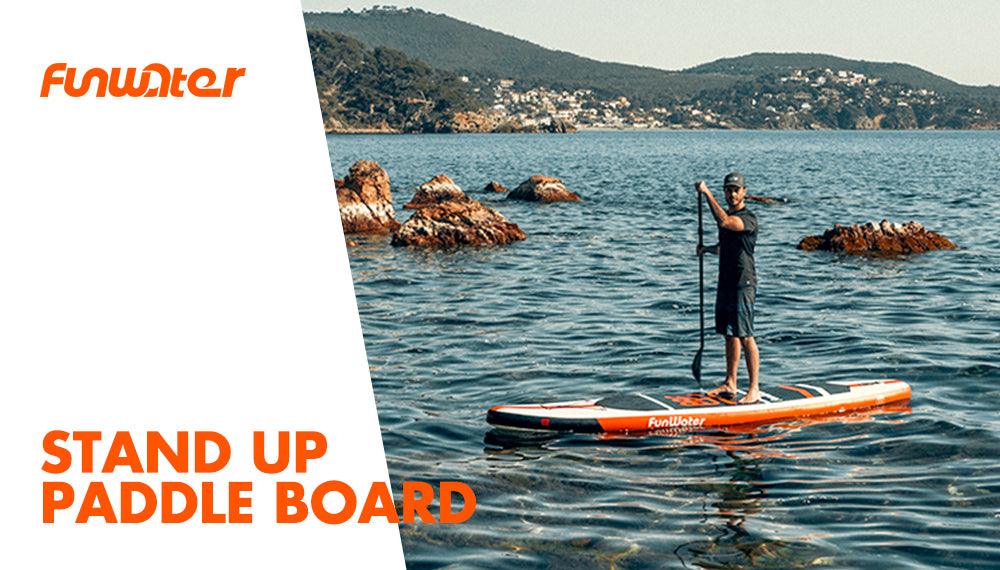Paddle boarding is the ultimate blend of zen and adventure, a workout that doesn’t feel like a workout, and a chance to pretend you’re walking on water. Standing up on a paddle board might seem straightforward, but mastering it can take your paddle boarding game to the next level. Whether you’re a beginner who’s tired of splashing around or an experienced paddler looking to up your game, this guide has got you covered with some advanced (and fun) techniques.
The Basics of Standing Up on a Paddle Board
-
Starting on Calm Waters
First things first, if you're new to this, pick a calm, flat body of water. Think of it as paddle boarding with training wheels. Fewer waves mean fewer unexpected dunks in the water. Plus, the ducks are usually more welcoming.
-
Proper Board Placement
Place your board in shallow water, deep enough to float without the fins touching the bottom. Position it perpendicular to the shore like you’re about to perform a magic trick (because standing up on this thing without falling is kind of magical).
-
Getting on the Board
Kneel down in the center of the board, right over the handle. Your paddle should be lying across the board in front of you like a comforting security blanket. Keep your knees shoulder-width apart to form a solid base, and take a moment to feel the board's gentle sway.
Mastering the Stand-Up Technique
-
Positioning Your Feet
Ready to rise? Move one foot at a time to the spot where your knees were. Your feet should be parallel, shoulder-width apart, and centered along the board’s midline. Think of this as the paddle board version of finding your center in yoga—except wetter.
-
Rising Slowly
Here’s where it gets interesting. Shift your weight gradually from your knees to your feet. Use the paddle as a balancing aid by placing it across the board. Slowly lift your chest and head, straightening your legs. Engage your core muscles to maintain balance and resist the urge to flail your arms wildly.
-
Finding Your Balance
Once standing, keep your knees slightly bent and your core engaged. This athletic stance absorbs movements and waves, making it easier to stay upright. Look at the horizon to maintain equilibrium, and avoid looking down at your feet (unless you enjoy impromptu swimming).
Advanced Techniques for Stability and Control
-
The Surf Stance
Feeling adventurous? Try the surf stance. Position one foot slightly in front of the other like you’re on a surfboard. This stance allows for quicker weight shifts and improved maneuverability, perfect for when you’re feeling like a paddle boarding pro.
-
Paddle Placement and Movement
Your paddle is your best friend out here. Keep it in the water as much as possible for stability, like a tightrope walker’s pole. Use long, smooth strokes, keeping your arms straight and rotating your torso. This technique not only propels you forward but also helps keep you balanced.
-
Engaging Your Core
Your core muscles are your secret weapon. Keep your abs tight and use your torso to power your paddling strokes. This engagement not only aids in balance but also provides a stronger, more efficient paddling motion, giving you that extra boost (and maybe even some abs).
Overcoming Common Challenges
-
Dealing with Waves and Currents
Waves and currents are like the universe’s way of asking, "How badly do you want this?" Angle your board slightly into the wave instead of head-on to reduce impact and maintain balance. In currents, bend your knees and lean slightly forward to counteract the water’s push, turning you into a paddle boarding ninja.
-
Recovering from a Fall
Everyone falls. It’s part of the fun (and makes for great stories). If you fall, aim to fall away from the board to avoid injury. To get back on, position yourself at the center, grab the handle or the side, and kick your legs to help pull yourself up. Once back on, kneel first before attempting to stand again. Practice makes perfect—or at least less splashy.
Training and Practice Techniques
-
Balance Exercises
Balance exercises on land can significantly improve your paddle boarding skills. Practice yoga, tai chi, or use a balance board to strengthen your core and improve stability. This way, standing up on your paddle board will feel like a walk in the park—minus the park, plus the water.
-
Incremental Practice
Take it step by step. Start by kneeling and paddling to get comfortable with the board’s movement. Gradually transition to standing up for short periods, increasing the time as you gain confidence. And don’t forget to practice in different water conditions to become a versatile paddler.
-
Mental Focus and Relaxation
Staying relaxed and focused is key. Tension makes you more prone to falling. Practice deep breathing and visualization techniques to stay calm and centered. Visualize yourself standing up and maintaining balance—it’s like a mental dress rehearsal, minus the stage fright.
Standing up on a paddle board with confidence and style opens up a whole new world of water adventures. By mastering the basics and incorporating advanced techniques, you can improve your balance, stability, and overall paddle boarding experience. So practice regularly, stay focused, and have fun. With these tips, you’ll be standing tall and paddling strong in no time—ready to impress both the ducks and your fellow paddle boarders.





